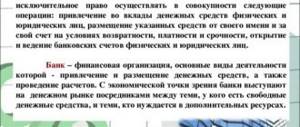An option is a flexible and practical derivative financial instrument. With its help, the most productive strategies are implemented.
An options contract defines the right of one of the parties (the holder) to buy or sell an underlying asset at a predetermined price after a certain period of time in the future. He acquires this right for a certain amount of money, called a premium. The second party (subscriber) undertakes to satisfy the holder’s demand and exercise his right, respectively, by selling or purchasing the asset. The key factor is the deferred effect of the contract. The expiration date becomes decisive, so it is important to understand how a European option differs from an American one.
The division according to performance style has developed historically. If in the USA options determined the right to buy or sell an asset at any time within a fixed period of time, then in Europe a contract with a fixed expiration date, before which no action was taken, became very popular.
At the moment there is no connection between style and the geographical location of the contract. Now American and European options are used anywhere in the world and on any exchange that has a platform for trading options contracts.
Basic Concepts
An American option gives its holder the exclusive right to buy or sell the underlying asset, which is carried out at a price determined in advance on any date before the end of the contract period.
A European option gives its holder the exclusive right to buy or sell an asset, carried out at a price that was agreed upon in advance strictly at the time of expiration or execution of the contract.
Thus, it is the expiration time of the exchange instruments under consideration that determines the main difference between them. Interestingly, the deferred action factor directly affects the value of option contracts. The fact is that in most cases the American option is more expensive than the European one.
This division is usually called the option style. It was not an artificially invented concept, but was shaped by the very course of financial history.
Initially, in the United States of America, option agreements allowed the purchase or sale of an underlying asset on any date within a certain period of time. In turn, contracts with a fixed execution date were popular in European countries.
Where are they used?
Currently, most stock and stock options are American style. The exception is financial indices, which most often have a European style.
When concluding contracts on a particular exchange, the parties usually use an American options contract. This is due to several reasons. Firstly, such options provide great opportunities for each trading participant. Secondly, they do not interfere with the implementation of a trader’s specific strategy.
In the case of an American contract, strict standardization concerns only the determination of the size of the option premium. In addition, prices and expiration dates are subject to daily adjustment by the relevant exchange, this is done through clearing based on the results of daily trading.
When we are talking about direct interaction between two specific investors, and this does not happen on the stock exchange, then European options are used much more often. In such a situation, their harsh conditions, on the contrary, are not a disadvantage, but an advantage. Here, both parties are interested in stability and the absence of revision of the terms of the concluded agreement.
Interestingly, over the past few years, American options contracts, despite all their flexibility, are beginning to be replaced from exchanges by new hybrid types. Today there are:
- quasi-American;
- mid-Atlantic;
- Bermuda agreements.
Each of them has its own characteristics. For example, Bermuda contracts give their holders the right to expiration during the entire validity period, only on specific days of the week. Their specification necessarily contains an indication of this. This day of the week could be Monday or, say, Wednesday.
Where to start trading BO: a step-by-step guide
- Choose a reliable broker.
- Register and open a demo account.
- Learn the basics of how BO works on a demo account, which is especially convenient for beginners, conduct at least fifty trades, analyze the results, and only then proceed to real trading.
- Start with small investments. For beginners, it is advisable to place bets within the risk range of 2%.
What are strategies and how to use them
Each investor, both beginner and experienced, has his own capabilities and needs, therefore the principles of working with options may be different; accordingly, there are several trading strategies.
The best strategies for beginners
- Martingale strategy. Here the initial deposit is increased until any transaction begins to generate a profit that can cover all previous losses. However, this strategy is quite risky for beginners.
- Rapid daily breakthrough. Not a bad option for beginners. Knowledge of technical analysis is not needed here. The player records the moment when the candle on the chart breaks the high or low.
- Fourth profitable day. The player carefully watches the curve. When three candles appear moving in the same direction, the trader opens a trade.
- Triple tap trend. This requires the ability to draw a trend line on a chart. To buy a Put option, you need to draw a line at the two maximum points. When the price touches the line for the third time and bounces off it, you need to open a deal. The Call option is identical, only the line is drawn at the lows.
The best brokers for beginners
The very first thing new traders need to do when working with options is choose a broker. But how can you find a reliable intermediary from among the many companies? I will list the top brokers.
VTB Finam Sberbank Opening of BCS VTB's retail brokerage division appeared as a result of the purchase of Guta-Bank in 2004, which already had a strong brokerage division. Today it is part of the VTB group.
Advantages and disadvantages of a professional participant
the choice of instruments includes the Moscow and St. Petersburg exchanges, foreign exchanges for clients with the status of “qualified investor”;
opportunity to invest in structured products. Main focus on bonds;
reliability;
convenient mobile application “VTB My Investments”.
poor customer support, quality complaints;
The maximum amount to invest is RUB 100,000. per day for depositing through VTB My Investments plus commission up to 0.4% of the amount;
When withdrawing more than 300,000 rubles/month, the commission is up to 0.2% of the amount.
Basic tariffs of VTB broker.
Finam. Representative offices in 90 Russian cities. In addition to the assets of Russian companies, it provides access services to world exchanges. Has foreign subsidiary investment companies. 240 thousand clients. He is a Forex dealer. Trading from a single account.
Sberbank. Brokerage division within the bank. Due to its monopoly presence in the market and total coverage of Russian settlements, it has the largest number of concluded agreements for brokerage services.
But in terms of service and set of tools, Sberbank is inferior to the leaders in retail brokerage services. And it is in last place in terms of these parameters on the list. In my opinion, as a broker it loses to the second largest bank in Russia, VTB.
Advantages and disadvantages
a convenient approach to opening a brokerage account both through the website and through Internet banking;
Availability of an information resource on a separate website “Investments. Intelligible from Sberbank." Useful for beginners. The service is not up to par with those from BCS or Finam, but I would consider its presence a plus;
a large number of branches where you can personally sign the necessary documents to open an account and where to deposit your money;
no commission when transferring from an active bank account in Sberbank to a brokerage account. Everything can be done through Sberbank Online.
lack of a separate website for brokerage services. There is a website for the management company, but this is a separate area. The section on the main website is uninformative and inconvenient compared to other brokers;
only 2 tariff plans to invest money;
poor technical support, frequent complaints about the level of service;
no access to trading with foreign shares.
Opening Broker - 25 years in the brokerage services market. Later a bank appeared, the structure turned into a financial holding company. After a series of changes and reorganization, today everything is under state control.
In my opinion, the best Russian broker to invest money in terms of the range of services provided and ease of use. Part of Otkritie Bank, the brokerage division has its own website.
Broker advantages:
- easy and convenient procedure for online account opening through the website, with SMS confirmation;
- high level of professionalism of the customer support department;
- opportunity to invest in structured products;
- MetaTrader5 terminal for trading in the stock section of the Moscow Exchange;
- convenient personal account with the ability to trade;
- single account for money;
- access in one trading terminal to foreign securities on the St. Petersburg Stock Exchange and foreign exchanges (you must have the status of “qualified investor”);
- convenient tariff plans;
- informational-analytical-educational Internet resource “Open Journal”. Primarily useful for beginners in investing;
- own training programs. Seminars, webinars, video courses, individual consultations (face-to-face and correspondence) on a separate website opentrainer.ru.
Flaws:
- commission 295 rub. for maintaining an account when valuing client assets for less than RUB 50,000;
- commission 175 rub. for maintaining an account when making transactions.
The tariff family includes 28 tariff plans. Two popular plans for beginners and new brokers are the “Universal” and “Investor”. The first one is installed by default for beginners, unless otherwise desired. You can change it in your personal account.
Tariffs “Universal” and “Investor” for independent work:
With analysts' recommendations:
BKS. Financial holding. The brokerage division, the bank, BCS Global Markets - investment services and brokerage for institutional and VIP investors with high income. The broker provides access to Russian and foreign exchanges.
Advantages:
- wide selection of trading instruments. Moscow, St. Petersburg exchanges, world platforms;
- single account;
- mobile application “My Broker” for Android and iOS. Trading, analytics, news, statistics and asset analysis. Parallel to the BCS Bank mobile application when maintaining a current account. The same login and password for “My Broker” and “BCS Bank”;
- premium bank card for money Visa Platinum “Broker”. Quick transfer between the card and the “My Broker” application;
- withdrawal of dividends from IIS to a bank account without losing IIS status;
- information and analytical portal BCS Express. Unique content on the topic of investment and stock trading.
- individual highest reliability rating AAA, forecast “Stable” (National Rating Agency).
The disadvantage of this option to invest money is that the monthly fee for using the Quik trading terminal is 300 rubles. Reduced by the amount of commission fees for trading operations.
What is the best expiration time?
Expert opinion
Vladimir Silchenko
Private investor, stock market expert and author of the Capitalist blog
Ask a Question
Let me remind you that expiration is the termination of the contract, i.e. the period after which the main condition of the option must be fulfilled. The best moment for expiration is directly related to the chosen trading strategy.
So, if you prefer long-term, it is better to take options from the month. With a medium-term strategy, which is based on technical analysis and the search for trend movements, positions for an average of 2-3 weeks are suitable.
If the scheme is short-term, the expiration time can be from several days to a week. For trading within one day, positions from one hour to one trading day will be optimal.
Beginner speculators are advised to take the expiration date within one day. Moreover, the listed schemes work both with regular options and with binary ones.
How is the bonus calculated?
The main key factor for such an assessment is the difference between the spot and strike prices. In addition, it is customary to take into account the time remaining until the contract expires.
True or intrinsic value is defined as the difference between the current and agreed upon values of the underlying asset. The greatest benefit, if we are talking about a put option, can be obtained in a situation in which such a difference is maximum and positive. For a call contract, everything is exactly the opposite.
The American derivative style has much more flexibility. This is due to the fact that asset quotes change and by the time of expiration they can deviate greatly from the most favorable ones.
This is another difference between the American instrument and the European one. At the same time, time value often makes an American more expensive than a European.
The daily recalculation of prices and maturities forces traders from time to time to modify the trading system they are currently using. This is the only way to get maximum efficiency from using the exchange instruments in question.
Existing Strategies
Almost all strategies that have been invented to date were created for European options contracts. The fact is that each of them implies that the expiration date of the option is the same as the last date of its existence. If you think about it, there is a grain of wisdom in this. Otherwise, the trader would have to introduce too many variables into the algorithm's calculations. As a result, the developed strategy would be incredibly difficult to use in practice.
In this regard, all existing option strategies should not be considered as dogma. They are extremely unsuitable for working with American or Bermuda options.
If you see that the author of the strategy says that it is suitable for such contracts, you should not blindly take it at face value. In most cases, the trading system provides for deadlines for American options. And in such a situation, their assessment is based only on internal value.
Amendments to the preliminary execution of the agreement must be made individually for a specific exchange situation.
Alpari and Anyoption: reviews from professionals
Choosing a brokerage company is an important step towards achieving financial independence in the options market. In order not only not to fall for the tricks of scammers, but also to get the most favorable trading conditions, a beginner needs to turn to specialized forums and look at the reviews written there.
So, for example, after looking at the reviews, you can see that two companies are very popular among traders: Alpari and Anyoption. In most cases, reviews relate to the high-quality trading platform of Alpari and Anyoption and, of course, their control by regulatory authorities.
Alpari and Anyoption: reviews from professionals
Among other things, having looked at the reviews, it can be noted that both Alpari and Anyoption provide their clients with the most favorable trading conditions for short-term periods (from 15 seconds) and up to several months.
Asian options
Asian option contracts are an independent derivative in which the exercise price is determined based on the average value of the investment asset over a certain period of time.
In the financial environment, such agreements are also commonly called mid-rate or mid-price options.
Most often they are used in those markets that have high volatility of investment assets traded there. Usually we are talking about commodities (oil), exchange rates and stock indices.
Their distinctive feature is that the strike or expiration price of the option is unknown at the time of its conclusion. Sometimes only the method for determining it is indicated.
Volatility smiles and also grins.
There is a hint in the name itself; apparently, it is something related to volatility. And you are absolutely right...!!! Behind the scenes, it can be defined for greater understanding that volatility = variability.
Volatility smile – the dependence of expected volatility on the option strike. In order for a chart to be called a smile, the chart must be symmetrical with respect to the central strike. If the chart is not symmetrical, then this is not a smile, but a volatility grin.
Let's look at an example next. Let's open the option board and select one of the instruments, for example, RTS-6.21. Let's highlight strikes and expected volatilities.
Now let’s build a graph of the dependence of volatility on the strike of an option on the RTS-6.21 futures, which will be called the volatility smile.
As you can see, the chart looks more like a volatility grin. A reasonable question is, is volatility grinning bad or not? Answer: this is neither bad nor good, this is a normal situation in the market, which also needs to be worked with.
How to work with all this? It's simple, you don't need to invent a wheel. We work according to the well-known scheme of buying and selling volatility. If you see that volatility is growing significantly at one of the strikes, then it is reasonable to think about selling an option at this strike. And vice versa: if volatility falls, it makes sense to think about buying an option at this strike.
Good luck with your transactions...!!!









